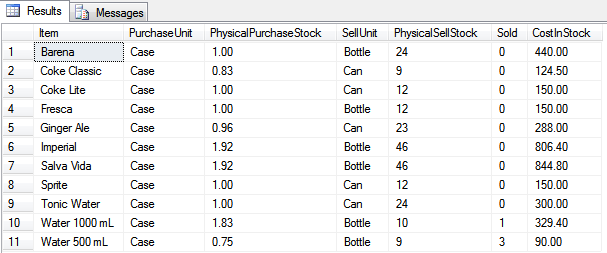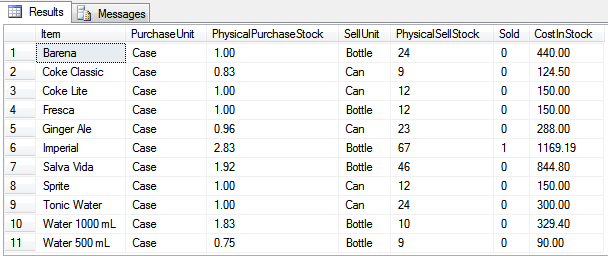The difference between this query and the previous one is that this one reacts to the data entered in the Column Current Inventory in the End Of Day Records.
The next step will be trying to react to orders so you can see stock ON THE FLY.
SELECT [InventoryItemName],
CONVERT(numeric(6,2),ISNULL([PhysicalInventory],([InStock]+[Added]-[Removed]-[Consumption]))) as StockFisico,
CONVERT(INT,(CONVERT(numeric(6,2),ISNULL([PhysicalInventory],([InStock]+[Added]-[Removed]-[Consumption])))*[UnitMultiplier])) as StockFisicoUN,
CONVERT(numeric(6,2),CONVERT(numeric(6,2),([Cost]*(CONVERT(numeric(6,2),ISNULL([PhysicalInventory],([InStock]+[Added]-[Removed]-[Consumption]))))))) as Costo
FROM [PeriodicConsumptionItems]
WHERE [WarehouseConsumptionId] = (SELECT TOP 1 [Id] FROM [PeriodicConsumptions] ORDER BY [Id] DESC)
AND
CONVERT(numeric(6,2),ISNULL([PhysicalInventory],([InStock]+[Added]-[Removed]-[Consumption]))) >= 0.05
ORDER BY [InventoryItemId]
Hope this is usefull.
G.



 And that method should probably match the method
And that method should probably match the method